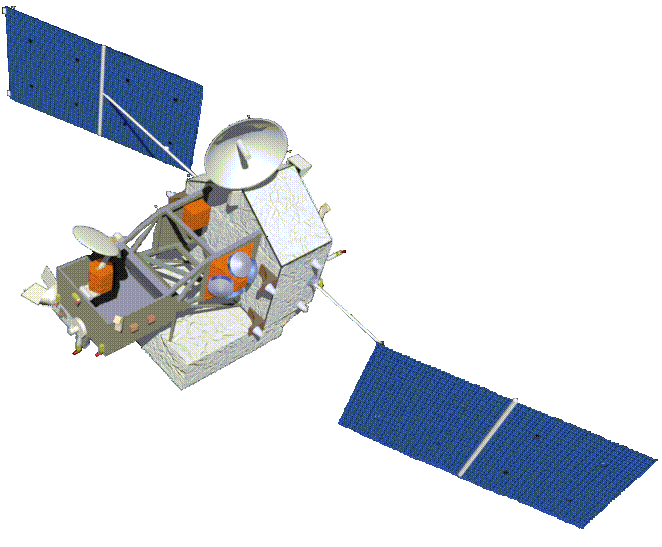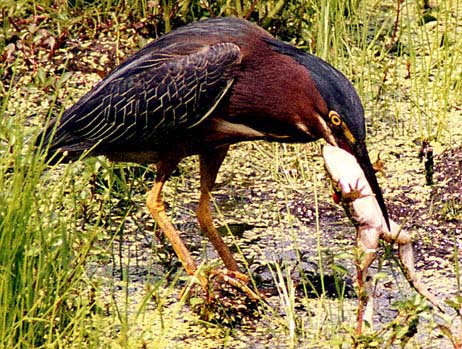 Introduction
Introduction Economic Impact of the Internet on Our Economy
Economic Impact of the Internet on Our Economy
 Conclusion
Conclusion Bibliography
Bibliography
|
by
Benjamin Kedem
bnk@math.umd.edu
CAPP 385, Spring 1999
 Introduction
Introduction Economic Impact of the Internet on Our Economy
Economic Impact of the Internet on Our Economy
 Conclusion
Conclusion Bibliography
Bibliography
The Internet is a vast collection of world-wide inter-connected networks configured with the help of a group of about 100 TCP/IP protocols. It evolved from the US Department of Defense "Advanced Research Projects Agency Network," ARPANET, of the late 60's and early 70's. It has greatly transformed our society in ways unimaginable-let alone foreseen-only a few decades ago. At the close of the 20th century the Internet global connectivity has made us what Hauben and Hauben (1997) refer to as Netizens: Net Citizens. In this new world geographical separation is replaced by cyber/virtual space and we are all next door compatriots, or netizens. In this new world of Internet connectivity people can share their experiences, ideas, suggestions, and problems, try to exert influence, and get fast responses and reactions from friends and strangers alike, feedback that is in many cases is advantageous to the parties involved.
The Internet society has created its own new culture and Net terminology. Terms such as World Wide Web (WWW), search engines, HTML, web pages, web servers and clients, http, URL, TCP/IP, SMTP, POP, DNS, ISDN, newsgroups, domain names, UNIX, FTP, WS_FTP, clickable images, bookmarks, telnet, BBS, CGI, ftp.fedworld.gov, mailing lists, GIF, JPEG, dot files, LAN, network, Internet Firewall, and many more have become household terms. We are now talking of e-trade, e-travel, e-mail, e-toys, e-commerce, e-banking, on-line services, virtual this and that such as virtual museums, and so on, terms that point to the degree, desire, and ability of our society to adapt to a changing world. A good example of this is CAPP 385 itself! It points out the will of people to learn and keep up with the new advances in cyber space, and altogether absorb the new Internet culture.
But perhaps the most important thing that can be said about the Net is that it welcomes and encourages intellectual activity. People are welcome to express their views and the things on their minds, share information, and brainstorm and interact with each other. In short, the Net enables people to contribute to an ever increasing human intellectual storage. The outcome is a continuous expansion of human knowledge and information that is having a great impact, unfortunately not all positive, on our social, economical, and political organizations and way of life. Some of this impact will be described in the following pages.
Economic Impact of the Internet on Our Economy
The age of information/communication technology is here, at the close of the 20th century. It is epitomized by the Internet. The Internet provides many information/communication services such as browsing of information, search engines, electronic mail, file transfer, Newsgroups, remote access via telnet, and bulletin boards, and the means to post and retrieve textual/sound/video/image information from Web pages. The huge potential of these services has attracted the attention of the business world, and today more and more business is transacted via the Internet. The impact of this trend is explored on the local, national, and global level by specific examples and some statistical facts.
Economic Impact on the Washington DC Region
The Washington DC region is home to a great number of Government agencies, Government and private research institutions, and many high-tech companies (in Northern Virginia alone there are over 2000 IT companies), that make a heavy use of the Internet. The extent of Internet use, applications, and transactions executed by this collection of different Government and private organizations is so large that it is quite hard to think of how they were able to operate and carry out their daily business without the Internet as was the case only a few years ago. This is of course trivially true of those organizations that owe their very existence to the Internet. And the impact of the Internet in all its facets on this varied group of outfits has in turn impacted directly the DC economy. It is sufficient to consider two conspicuous cases as examples.
Consider first the case of America Online, Inc. (AOL):
 |
Founded in 1985, America Online, Inc. (NYSE: AOL) is the world's leader in branded interactive services and original content. America Online, headquartered in Dulles, Virginia. |
The following charts are from a 1998 AOL report. The report shows an impressive rate of growth, membership close to 13 million strong, and total 1998 revenues in excess of $2.5 billion.

Moreover, as recently as April 27, 1999, America Online, Inc. announced for its fiscal third quarter ending March 31, 1999, a consolidated net income of $420 million, setting new records for total revenues. The revenue sources included advertising and commerce revenues, and AOL membership growth. For a company that employs thousands in the Washington DC region, such impressive performance is nothing but a blessing to the region's economy.
Next we turn to the U.S. Federal Government, the largest employer in the DC region. The Federal Government employs many thousands of workers in numerous Government agencies. All these agencies have Internet connections for communication, military, scientific, public information, and many other purposes. To maintain its vast Internet operations, a sizable part of the Government's work force-both internal and contract work force-consists of software and communication engineers, programmers, networks specialists, and other high-tech personnel. This highly paid large body of workers has a huge buying power which contributes handsomely to the DC area economy.
For a typical example, we turn to a recent NASA mission called the Tropical Rainfall Measuring Mission TRMM that was originally initiated and currently administered at Goddard Space Flight Center, Greenbelt, Maryland.
 |
This is the TRMM satellite which carries on board: Precipitation Radar (PR),
TRMM Microwave Imager (TMI), Visible Infrared Scanner (VIRS),
Lightning Imaging Sensor (LIS),
Clouds and the Earth's Radiant Energy System (CERES).
Click here for an example of a
TRMM Product
that can be downloaded from the Internet and is described
here.
Putting and maintaining the TRMM data on the Internet for the world
scientific community is done at Goddard SFC, Greenbelt, MD. It
requires the employment of numerous well paid specialists who live in the
Washington DC area. Their buying power invigorates the economy of the DC
region. |
TRMM is the first mission dedicated to measuring tropical and subtropical rainfall through microwave and visible infrared sensors, and includes the first spaceborne rain radar. Tropical rainfall comprises more than two-thirds of global rainfall. It is the primary distributor of heat through the circulation of the atmosphere. Understanding rainfall and its variability is crucial to understanding and predicting global climate change. Our current knowledge of rainfall is poor, especially over the oceans. By use of a low-altitude orbit of 217 miles (350 kilometers), TRMM's complement of state-of-the-art instruments will provide more accurate measurements. These new measurements will increase our knowledge of how rainfall releases heat energy to drive atmospheric circulation.
The punch-line is that the huge amount of TRMM data is loaded and maintained on the Internet for the world scientific community at NASA/Goddard SFC, Greenbelt, MD, less than 10 miles from Washington DC. This requires a highly paid skilled work force who lives and spends in and around Washington DC and thus invigorates the DC area economy. TRMM is only one of thousands of similar Government projects and initiatives that prove to be a bonanza for the DC area economy.
From U.S. Government reports and media giants such as the Wall Street
Journal,
The New York Times, and CNN, Americans read and hear a constant stream of
reports that in recent years the U.S. economy has performed beyond most
expectations. Playing an important role in this are
a shrinking budget deficit, low interest rates, a stable macro-economic
environment, expanding international trade with fewer barriers, and effective
private sector management. While the full
economic impact of the Internet cannot
yet be precisely assessed, its impact has been significant as can be seen
from the following facts published in a recent U.S. Department of Commerce
report titled "The Emerging Digital Economy":
 |
THE EMERGING
DIGITAL ECONOMY
Executive Summary
(from the US Government site on e-commerce)
http://www.ecommerce.gov
POSTED April 15, 1998
|
Table E1. Growth in Thousands of Internet Hosts and Domain Names (Source: Network Wizards.)
| Number of Hosts | Number of Domains | |
| July 93 | 1,776 | 26 |
| July 94 | 3,212 | 46 |
| July 95 | 6,642 | 120 |
| July 96 | 12,881 | 488 |
| July 97 | 19,540 | 1,301 |
From the report we learn that the appetite for top-level commercial (.com) domain names was shared by large companies such as media giants, phone companies, Internet service providers, television cable companies and, electric utilities, as well as by many smaller companies that use the Internet to provide more efficient and effective customer service, lower sales and marketing costs, and realize new sales horizons. At the same time hundreds of new firms were created whose business is to help businesses use the Internet effectively. These firms design Web pages with advertising banners, create Web-based catalogs, build security tools, create and track direct marketing trends, and develop means to speed up the flow of data and information across the network. Venture capitalists gave just under $12 billion to hundreds of such information technology start-ups in 1996 and 1997. This latter group of information technology start-ups is a good example of the direct impact of the Internet on the U.S. economy, for they would not have been created without the Internet.
It seems however that the greatest impact of the Internet on the U.S. economy
is manifested in the way business is done and not so much the type of
business.
This is best explained quite well in the following extended quotation from
 e-business page:
e-business page:
The Web is changing every aspect of our lives, but no area is undergoing as rapid and significant a change as the way businesses operate. As businesses incorporate Internet technology into their core business processes they start to achieve real business value. Today, companies large and small are using the Web to communicate with their partners, to connect with their back-end data-systems, and to transact commerce. This is e-business -- where the strength and reliability of traditional information technology meet the Internet.
This new Web + IT paradigm merges the standards, simplicity and connectivity of the Internet with the core processes that are the foundation of business. The new killer apps are interactive, transaction intensive, and let people do business in more meaningful ways.
Overall, the total business-to-business Internet commerce is projected to reach $300 billion in the U.S. by the year 2002, which is only 3% of total projected GDP in that year. But this is an early stage of a new medium which is sure to expand dramatically given the present rate of growth.
To assess the economic impact of the Internet globally, we shall concentrate
on an important sector of the world economy: Tourism-a multi-billion industry.
Tourism covers
eco-tourism, adventure tourism, beaches, hotels, resorts, spas, national parks,
restaurants, golf, skiing, conference centers, safari, boating,
and many more recreational
activities, all of which generate business on a large scale.
 |
 |

Las Vegas Welcomes The World: |

Assateague Island, Maryland: A Green Heron having dinner. |
To enhance the impact of the Internet on the emerging global travel/tourism business, a new organization Interactive Travel Services Association (ITSA), was created to promote the growth of the online services industry, and to educate the public about the benefits of purchasing travel packages online. The members include American Express, America Online, Biztravel, Carlson Wagonlit, Internet Travel Network, Microsoft, Pagasus Sysytems, Preview Travel, Trip.Com, and WorldRes. These companies support the continuing growth of the online global travel/tourism industry.
Global electronic commerce on the Internet is undergoing exponential
growth. Contributing to this growth is
the travel industry. In the U.S.
it sold over $800 million worth of travel in 1997, and is
expected to grow to
$5 billion by the year 2000.
The economic impact of the Internet on our society was demonstrated by specific examples pertaining to the economies of the Washington DC region, the U.S., and the world. The examples were supported by Government as well the private sector reports. The emerging picture is that of a basic change in the way business is done locally, nationally, and globally: More and more business is going online, and this trend is growing rapidly. This regards traditional business, and all the more so regarding IT companies such as America Online, Inc. whose growth is exponential. Given the present rate of growth of e-commerce, the 21st century will no doubt witness even a greater impact of the Internet on the world economy.